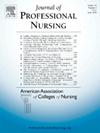运用逆向课程设计再造本科护理基础课程
IF 2.9
3区 医学
Q1 NURSING
引用次数: 0
摘要
美国护理学院协会(AACN)介绍了解决教育到实践差距和培养合格护士的要点。能力为本的教育要求学生达到进步指标,证明能力的实现。Wiggins和McTighe(2005)的以学习为中心的三阶段方法使护士教育者能够创造基于结果的学习体验。目的与意义本文的目的是将落后的课程设计应用于AACN (2021b)质量与安全能力,并在拟开设的本科护理基础课程中提供实施实例。结果采用与能力本位教育相结合的逆向课程设计,遵循迭代过程。AACN的基本能力在第一阶段提供了学习成果。在第二阶段,对学生的知识能力、技能和与学习成果相关的态度进行了评估。在最后阶段,制定了学习活动,以确保学生在一致的评估中取得成功。评估能力的结果,包括进度指标,必须在整个课程中确定。评估和跟踪学生能力的方法,在整个课程中,也必须与一致的学习活动一起开发。教师必须清楚地了解落后课程设计所涉及的步骤,并考虑为无法进步的学生制定一个正式的过程。本文章由计算机程序翻译,如有差异,请以英文原文为准。
Reimagining nursing education curriculum using a backward course design in an undergraduate fundamental nursing course
Background
The American Association of Colleges of Nursing (AACN) introduced the Essentials to address the education-to-practice gap and produce competent nurses. Competency-based education requires students to meet progression indicators, demonstrating competency attainment. Wiggins and McTighe's (2005) three-stage learning-centered approach enables nurse educators to create outcome-based learning experiences.
Purpose and significance
The purpose of this article is to apply the backward course design to the AACN (2021b) quality and safety competencies and provide an example for implementation in a proposed undergraduate fundamental nursing course.
Results
An iterative process was followed using backward course design aligning with competency-based education. The AACN's Essentials competencies provided the learning outcomes in the first stage. In the second stage, assessments of students' competence in knowledge, skills, and attitudes related to the learning outcomes were developed. In the final stage, learning activities were developed to ensure student success in the aligned assessments.
Recommendations
Outcomes, including progression indicators, for assessment of competency attainment must be identified throughout the curriculum. Methods to assess and track students' competency, leveled across the curriculum, must also be developed along with aligned learning activities. Faculty must keep a clear understanding of the steps involved in the backward course design and consider developing a formalized process for students who are not able to progress.
求助全文
通过发布文献求助,成功后即可免费获取论文全文。
去求助
来源期刊
CiteScore
4.80
自引率
8.00%
发文量
153
审稿时长
52 days
期刊介绍:
The Journal will accept articles that focus on baccalaureate and higher degree nursing education, educational research, policy related to education, and education and practice partnerships. Reports of original work, research, reviews, insightful descriptions, and policy papers focusing on baccalaureate and graduate nursing education will be published.

 求助内容:
求助内容: 应助结果提醒方式:
应助结果提醒方式:


